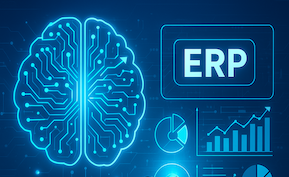Artificial Intelligence
Bridging the Data Gap: Infrastructure & Governance Foundations for Agentic AI in Enterprises

Agentic AI can only be as effective as the data foundation beneath it. For enterprises deploying autonomous systems that think, act, and learn independently, building a robust data infrastructure and governance framework isn’t optional—it’s the cornerstone of safe, scalable, and compliant AI adoption.
Why data infrastructure is critical for agentic AI
Unlike traditional automation, agentic AI requires continuous access to accurate, contextual data to make independent decisions. These systems don’t just process inputs—they reason across multiple datasets, learn from interactions, and coordinate with other AI agents. That means fragmented data or weak governance can cause serious downstream issues, from performance degradation to compliance failures.
- Data precision: Autonomous systems rely on high-quality, structured data for decision accuracy.
- Real-time access: Agents must process dynamic information instantly for adaptive workflows.
- Interoperability: AI agents often span multiple platforms—data pipelines must be unified and standardized.
- Traceability: Every action must be auditable for accountability and trust.
Core elements of agentic AI infrastructure
- Unified data fabric: A connected architecture that integrates structured and unstructured data across CRMs, ERPs, and cloud platforms.
- Real-time data streaming: Enables autonomous agents to respond instantly to changes in business conditions.
- Metadata management: Establishes data lineage, ownership, and context for transparent decision-making.
- API-first design: Facilitates interoperability between AI models, applications, and data systems.
- Edge computing layers: Supports latency-sensitive tasks by processing data closer to where it’s generated.
Governance: the human layer behind autonomy
While agentic AI systems operate autonomously, human oversight remains essential. Governance frameworks ensure AI decisions align with ethical, legal, and operational standards. The most advanced enterprises are shifting from “AI supervision” to “AI stewardship”—a continuous feedback loop where humans audit and refine agentic behavior.
- Data ethics policies: Define acceptable use, bias mitigation, and transparency requirements.
- Model accountability: Every autonomous decision should be traceable back to a model and dataset.
- Compliance integration: Agentic workflows must adhere to GDPR, SOC 2, HIPAA, or industry-specific frameworks.
- Access control: Role-based permissions prevent unauthorized actions by AI agents.
Building enterprise readiness for agentic AI
- Audit your data ecosystem: Identify silos, missing metadata, and inconsistent taxonomies.
- Adopt a data mesh or fabric architecture: Provide unified access without centralizing every dataset.
- Implement observability tools: Monitor AI decision flows and detect anomalies in real time.
- Automate governance: Use policy engines to enforce data rules across systems and agents.
- Foster cross-functional collaboration: Align IT, data, compliance, and operations teams around a shared AI strategy.
Top platforms supporting agentic AI data infrastructure
- Snowflake Cortex: Combines cloud data warehousing with AI governance and real-time pipelines.
- Databricks Lakehouse Platform: Enables unified data storage, ML training, and agent orchestration.
- Google Vertex AI: Offers integrated MLOps, model monitoring, and data compliance tooling.
- AWS Bedrock + Glue: Provides data lake integration and agent-ready LLM APIs for enterprise automation.
- IBM watsonx.data: Focuses on AI trust, transparency, and explainability through metadata control.
Key success metrics for AI infrastructure maturity
- Data freshness: Average lag time between data creation and AI agent access.
- Governance coverage: % of datasets governed under standardized policy frameworks.
- AI audit success rate: Number of compliant autonomous decisions per audit cycle.
- Cross-platform data interoperability: Measure of agent success across disparate systems.
Common pitfalls to avoid
- Shadow AI initiatives: Teams deploying agents without enterprise-wide oversight.
- Data silos: Legacy systems blocking autonomous cross-departmental workflows.
- Insufficient auditability: Lack of visibility into how AI agents make decisions.
- Compliance gaps: Failing to map new AI capabilities to existing regulatory obligations.
FAQs
What kind of data infrastructure does agentic AI need? Agentic AI requires unified, real-time, and interoperable data systems with strong metadata management and governance.
Why is governance important for agentic AI? Governance ensures AI decisions remain ethical, compliant, and aligned with human-defined objectives.
What tools support agentic AI governance? Platforms like Snowflake, Databricks, and IBM watsonx provide built-in AI governance and observability capabilities.
Can agentic AI operate without centralized data? Yes—data mesh and data fabric architectures allow decentralized yet governed access for autonomous systems.
Bottom line
Agentic AI thrives on trusted data. Enterprises that invest in scalable infrastructure and strong governance aren’t just enabling automation—they’re laying the groundwork for an intelligent, accountable digital organization capable of learning, adapting, and growing responsibly.






